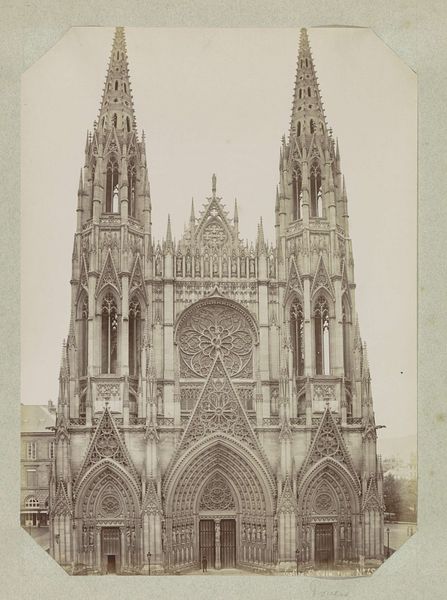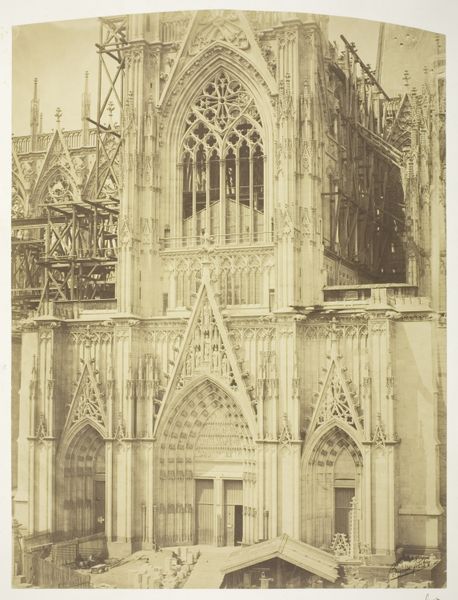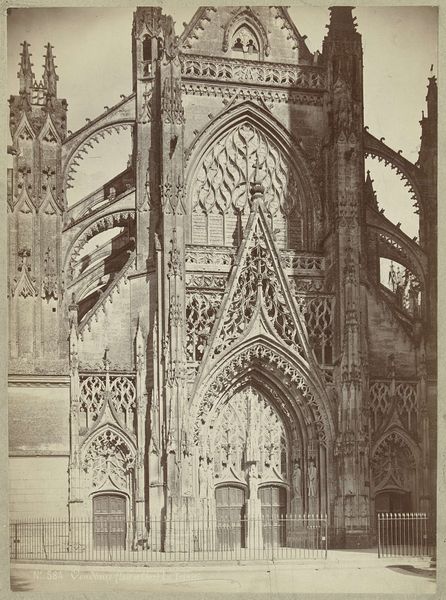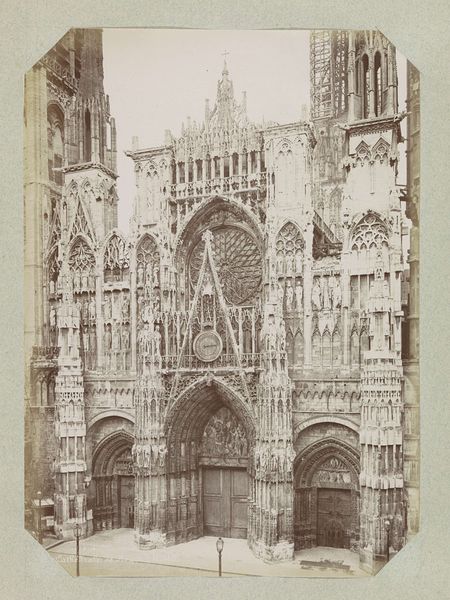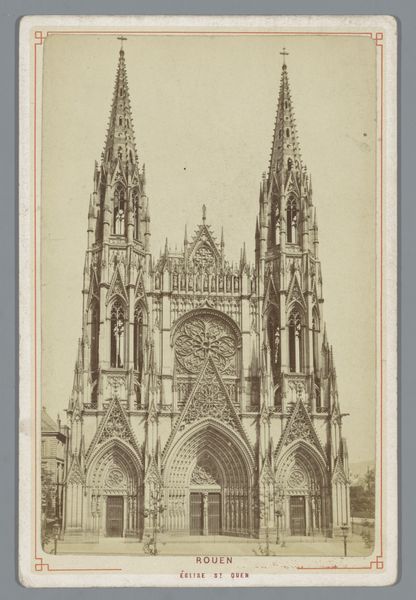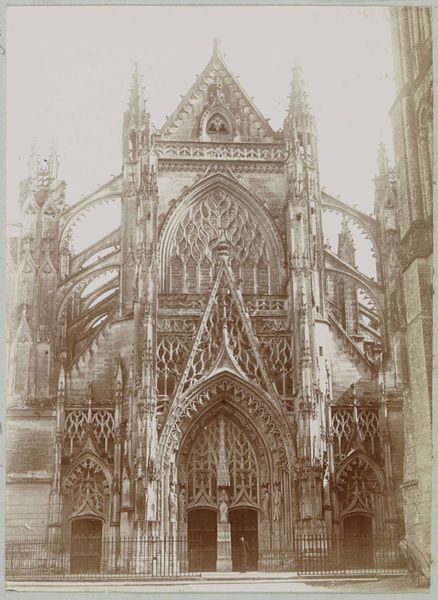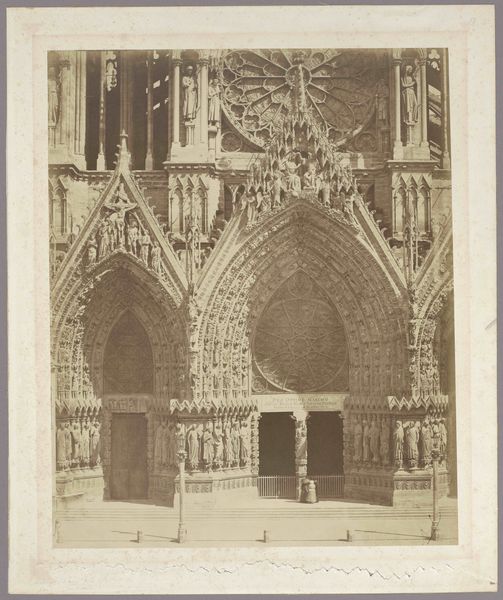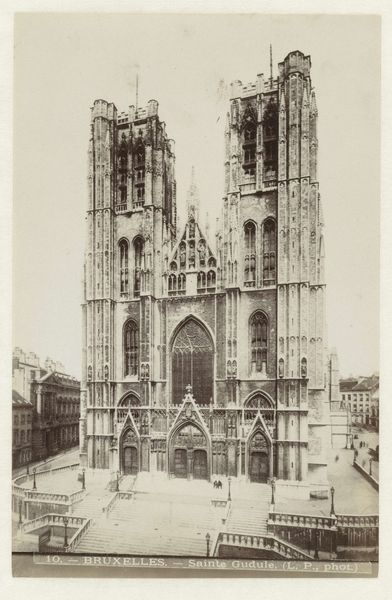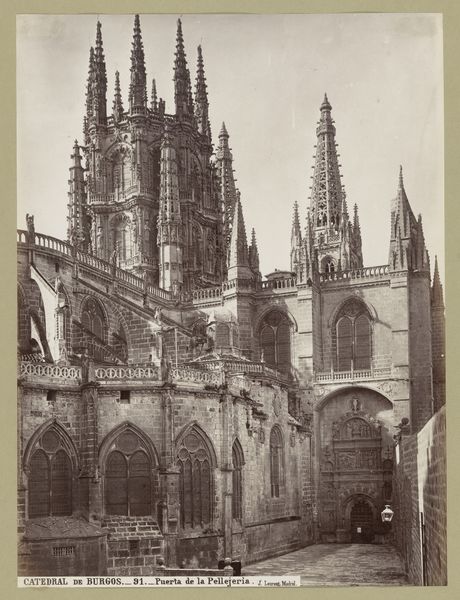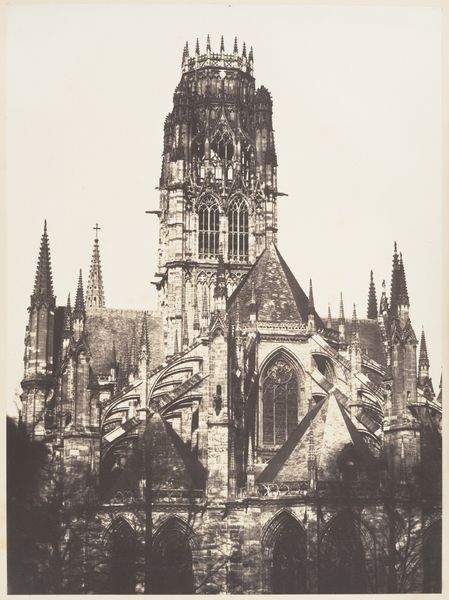
Dimensions: 34.7 x 26.3 cm (13 11/16 x 10 3/8 in. )
Copyright: Public Domain
Curator: This is Edmond Bacot's photograph, "Portail de Saint-Ouen, Rouen," created between 1852 and 1854. It's currently housed here at the Metropolitan Museum of Art. Editor: It strikes me as both powerful and incredibly intricate. The level of detail Bacot captured in what appears to be such an austere medium – photography at this early stage – is fascinating. There's a real gravitas. Curator: The gothic style certainly lends itself to that sense of gravitas. If we consider the mid-19th century context, photography itself was grappling with its place in society, specifically concerning its relation to painting. The detailed architectural studies of the time reflected broader European fascinations with gothic architecture, representing a link with a pre-industrial and profoundly Christian past. Editor: And wouldn’t that association carry certain political and class implications? Was this reverence shared broadly, or was it potentially upholding or critiquing social structures of the time? I am reminded of Foucault’s theory about power structures at play in art during this period. Curator: Absolutely. The act of documenting, of "scientifically" capturing, a monument like this cathedral certainly has implications for who held the power to record, to interpret, to own the narrative of the past. In light of feminist readings of history, how might access to such historical narratives, like what we find with this gothic architecture movement, contribute to larger power dynamics? Who benefits when such a seemingly "neutral" view of buildings that signify great power is rendered available as art for consumption? Editor: These questions encourage us to analyze these photos with modern sensitivities about colonialism, the historical ownership of information, and accessibility to these narratives that have so often historically centered certain demographics. Curator: Considering photography as a relatively new medium at the time, Bacot wasn’t just photographing a building; he was negotiating photography’s very role within established cultural institutions. The way he framed it within a gothic frame, was a powerful statement itself. Editor: Thank you for enriching this piece. The image now tells a deeper story that acknowledges broader social implications within art and the ways that the power dynamic in visual access has evolved. Curator: It reminds us that even seemingly objective records like photography can be embedded with social, political, and ideological layers that are there for critical investigation.
Comments
No comments
Be the first to comment and join the conversation on the ultimate creative platform.

